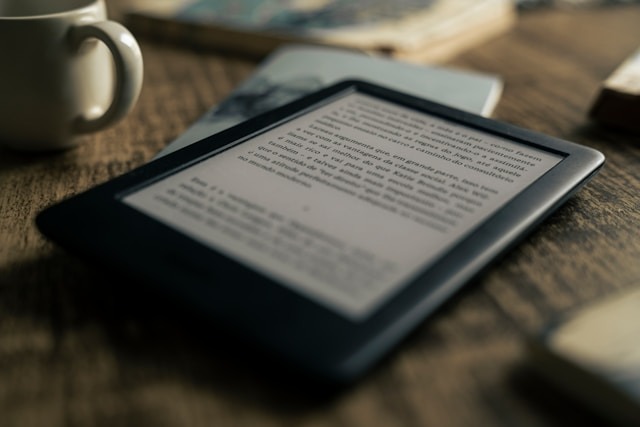The debate surrounding e-readers: print versus digital reading
Some would say that our mediums of reading have not transformed the experience much – after all, we have progressed from inscriptions on clay tablets to scrolling through text on digital tablets. However, nowadays there is a debate as to whether this rising culture of e-reading is overshadowing traditional print editions. This debate is likely unsolvable, as both mediums have their distinct advantages and disadvantages, which should be used to inform each reader’s personal choice.
Perhaps one of the most obvious flaws of reading digitally is the high exposure we all have to distractions. Aspects of the digital world like hyperlinks, notifications, or the ease with which we can simply close one app and open another, question the effectiveness of e-reading. This also considers the general population’s declining attention span, particularly amongst young people, due to the popularity of apps such as TikTok and Instagram reels. These deliver short, automated content that can be quickly absorbed and discarded rather than read in depth. Encouraging e-reading in young people may therefore stunt the growth of their literacy skills, as this does not control the impact of distractions on the slipperiness of concentration.
Promoting long novels within the same digital medium as shorter pieces of text, such as social media posts or text messages, accommodates the habit of skim-reading.
This questions whether digital books demand and maintain the same level of concentration as their physical counterparts
This questions whether digital books demand and maintain the same level of concentration as their physical counterparts. Concerns therefore arise surrounding the higher level of comprehension needed in children’s later education and literary lives, such as carrying out complex research and readings. Therefore, whilst e-reading may be more suitable for mature readers, it should be carefully controlled for developing children, both in homes and in educational settings.
Following this, reading a physical copy of a book instead is seen traditionally as more effective for developing readers. Not only this, but a physical copy also demands less strain from the eyes, which can of course start causing visual problems in young readers. In terms of pure enjoyment, there are also just some aspects of a physical children’s book that technology has not yet been able to recreate- and probably never will – such as “touchy-feely” books that are good for sensory interaction with very young children.
However, digital copies, such as through apps like Kindle, are frequently cheaper than physical print editions. As many would find to be a great advantage, they also provide immediate access for those who may not otherwise have proximity or easy access to bookshops or libraries. This often makes them more convenient and therefore the preferable choice over physical copies, which can, on the other hand, have the downside of being expensive and difficult to find and buy for yourself. Regardless of age, this generally positive aspect of e-reading poses a widespread benefit for all types of people, encouraging reading on a more frequent basis due to increased accessibility. After all, sometimes it is easier to read a book on your phone when you’re on the go, for example, than it is to buy and carry around a heavy hardcover edition.
Unfortunately, though convenience is a major advantage for digital books, this also poses a direct threat to the traditional publishing industry and the scene of physical bookselling as a whole
Unfortunately, though convenience is a major advantage for digital books, this also poses a direct threat to the traditional publishing industry and the scene of physical bookselling as a whole. The rising popularity of digital books could reduce the work available for industry professionals working with physical copies, such as booksellers and manual bookbinders. Fortunately, as it stands, digital books do not drastically outperform physical books or vice versa, allowing both mediums to thrive in the reading community and be appreciated for each of their benefits.
It is important for both mediums to remain alive in the industry, as clearly one or the other better suits different readers in different ways, reinforcing the importance of choice in the entire experience of reading. What may work for an English Literature student who, for example, would prefer to annotate all over a tangible book, might not work anymore for an older reader with little space left on their shelves for physical copies. When considering your own reading experience, think of what works best for you, and which medium you think would deserve the best investment of your time, money and brain.

Comments